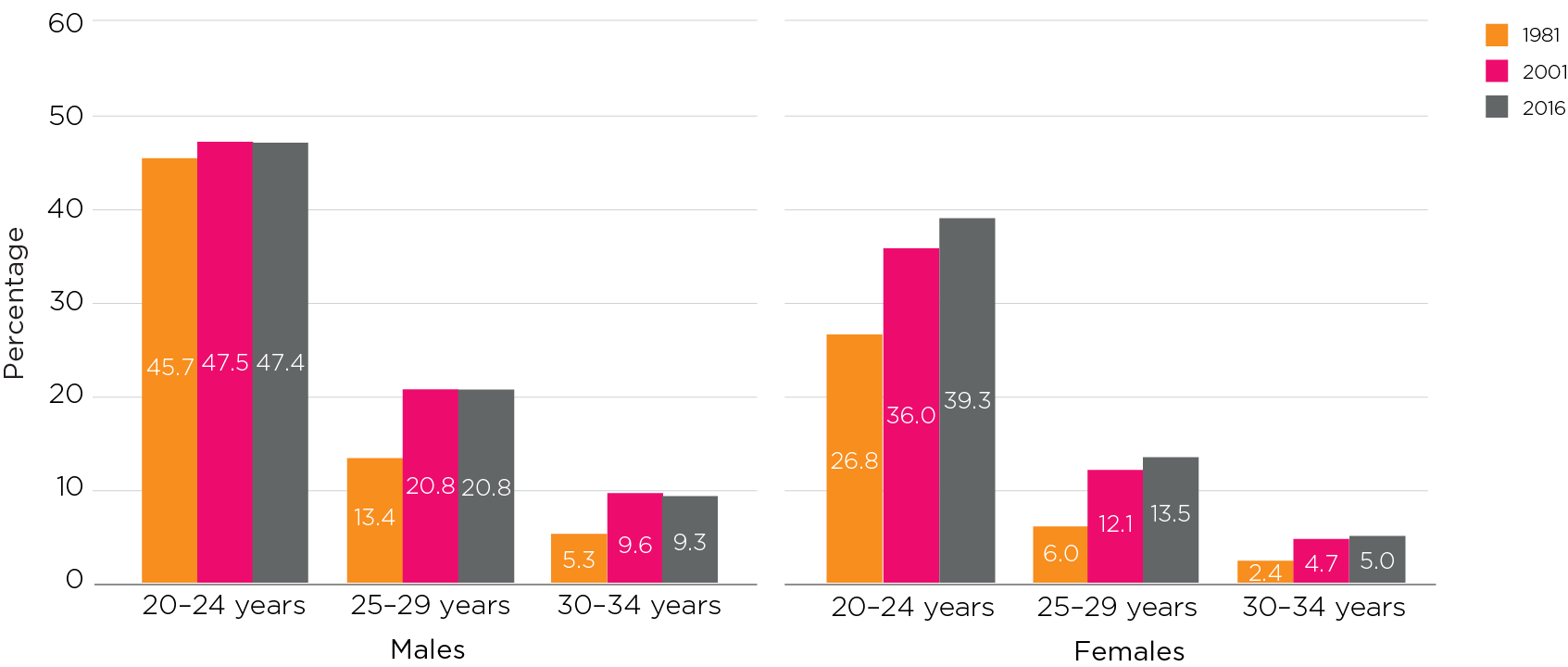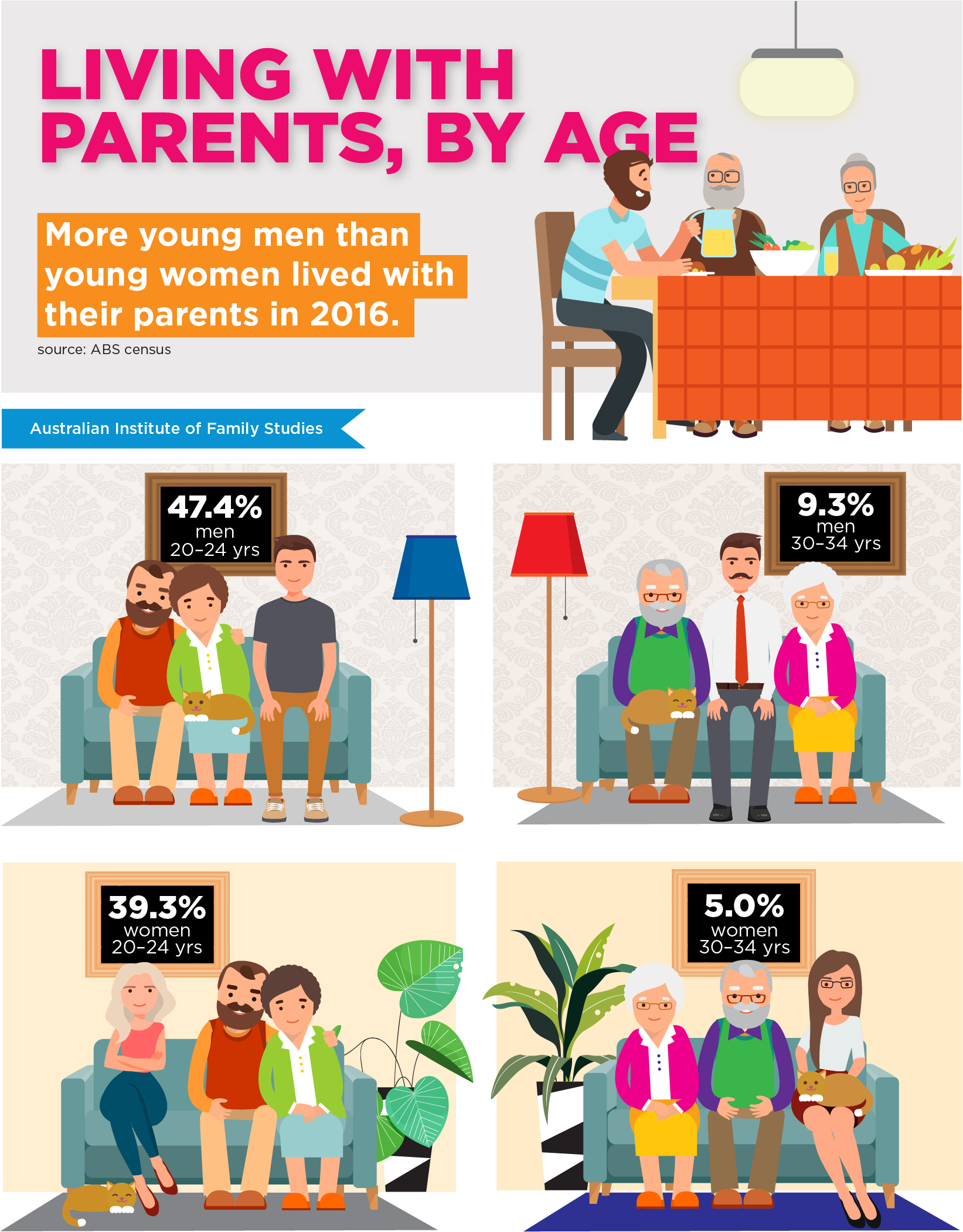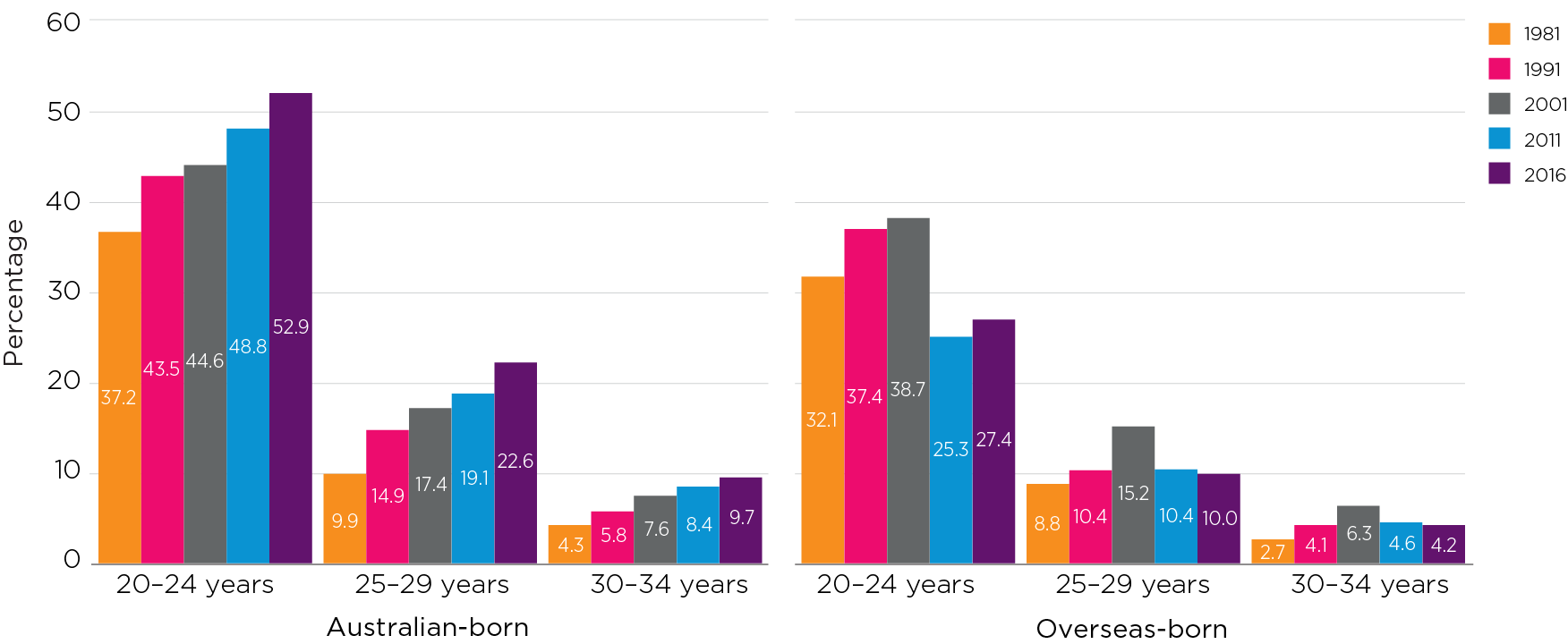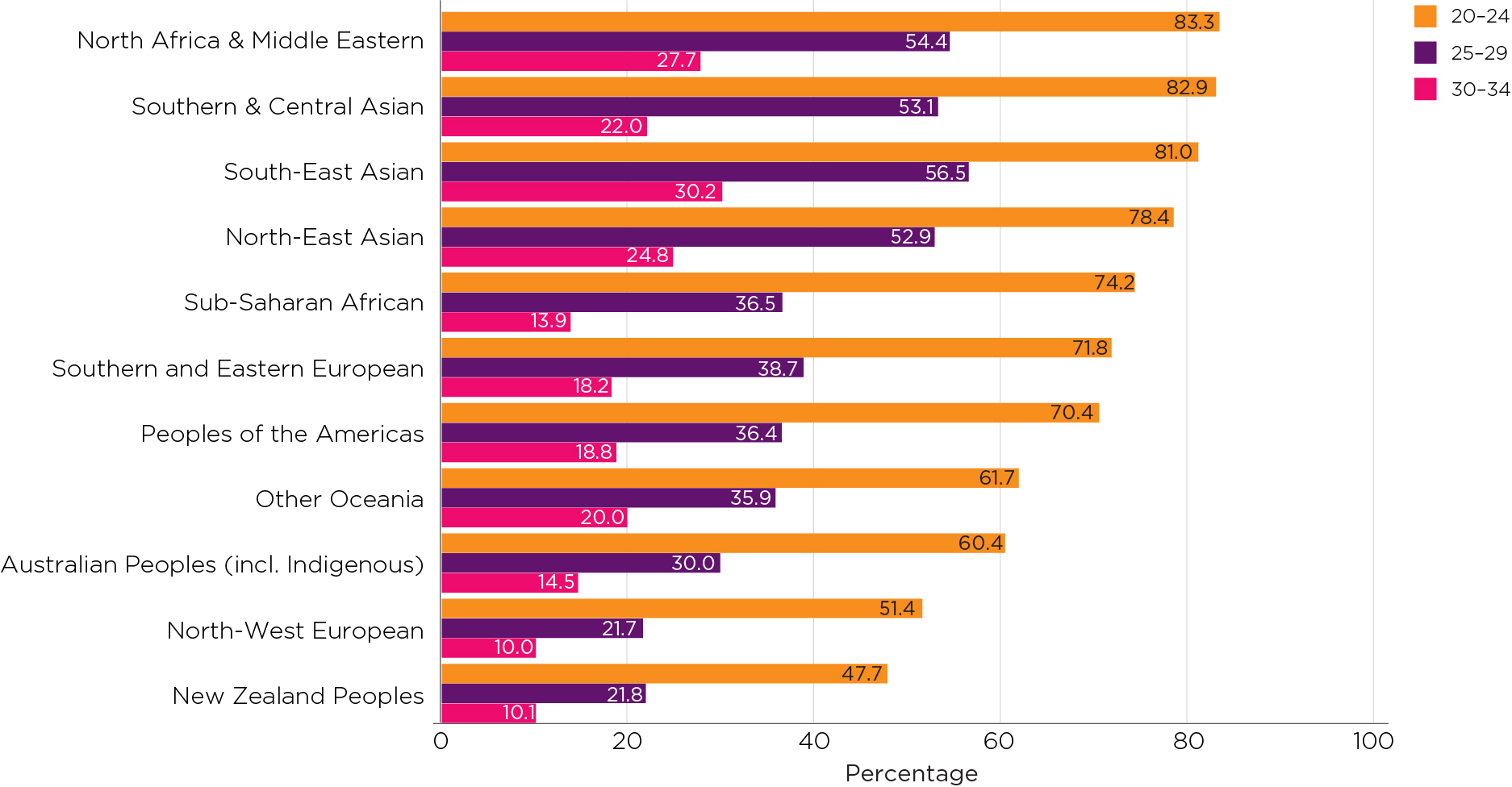Young people living with their parents
You are in an archived section of the AIFS website
May 2019
More young people are choosing to stay at home and live with their parents in their early adulthood.
In 2016, 43% of 20–24 year olds were still living with their parents; compared to 1981, when 36% of 20–24 year olds were living with their parents.
As young people get older, they are increasingly less likely to live at home. However they are choosing to leave home later.
In 2016, 17% of 25–29 year olds and 7% of 30–35 year olds still lived at home. Whereas in 1981, the figures were 10% of 25–29 year olds and 4% of 30–35 year olds.
Proportions of young people, by age, living with their parents: 1981–2016

Note: Persons living in parental home refer to those who were identified as dependent students or non-dependent children in families or households. Visitors were excluded.
Sources: Figures were derived from: the 1981 Census Household Sample File for 1981; customised tables for 1991 and 2001; the census TableBuilder for 2011 and 2016.
Differences between the sexes
Up to the age of 34 years, more young men than young women continued to live with their parents. For example, among 25–29 year olds, 21% of young men were still at home, compared to 14% of young women.
For 20–24 year olds, the increase in numbers has come mostly from young women choosing to live at home for longer. While the percentage of young men living at home only increased slightly between 1981 and 2016, for young women the numbers increased from 27% in 1981 to 39% in 2016.
Proportions of young people, by age and gender, living with their parents: 1981–2016

Note: Persons living in parental home refer to those who were identified as dependent students or non-dependent children in families or households. Visitors were excluded from the total populations.
Sources: Figures were derived from: the 1981 Census Household Sample File for 1981; customised tables for 2001; the census TableBuilder for 2016.

City vs the country
Young people living in greater capital cities were more likely than those living in regional areas to remain in the family home. For example, in 2016, 50% of young men and 43% of young women aged 20–24 and living in capital cities continued to live at home. In regional areas, only 42% of young men and 31% of young women still lived at home at the the same age.
The differences between capital cities and regional areas lessen as young people get older, leaving only a small difference in numbers of 30–34 year-olds still living at home with their parents.
Proportions of young people, by age and gender, living with their parents in greater capital cities and other areas: 2016

Note: Persons living in parental home refer to those who were identified as dependent students or non-dependent children in families or households. Visitors were excluded from the total populations.
Source: The 2016 census TableBuilder
Comparing those born in Australia with those born overseas
Young people born in Australia are more likely to live with their parents than young people born overseas, particularly 20–24 year olds.
For those born in Australia, across all three age groups, the data revealed that since 1981, increasing numbers are living with their parents past the age of 20.
However, while overseas-born young people living at home rose between 1981 and 2001; from 2001 to 2011 the numbers living at home fell, and have remained low since. This fall is likely to reflect the booming international education market in Australia, and the greater numbers of international students.
Proportions of young people living with their parents, Australian-born vs overseas-born: 1981–2016

Note: Persons living in parental home refer to those who were identified as dependent students or non-dependent children in families or households. Visitors were excluded from the total population.
Sources: Figures were derived from: the Census 1% Household Sample File for 1981, 1991 and 2000; and the census TableBuilder for 2011 and 2016.
Comparing ethnic backgrounds
Cultural background influences the likelihood that a young person will live in the family home for longer. Among Australian-born young adults, those with Asian, Middle Eastern, African or Southern and Eastern European ancestry are more likely to live with their parents, compared to those with Australian, North-western European or New Zealand backgrounds. This trend applies to both young men and young women.
Proportions of Australian-born young men living with their parents by age and ancestry: 2016

Note: Persons living in parental home refer to those who were identified as dependent students or non-dependent children in families or households. Visitors were excluded from the total population. The ancestry is the first response given in the census.
Source: 2016 census TableBuilder
Proportions of Australian-born young women living with their parents by age and ancestry: 2016

Note: Persons living in parental home refer to those who were identified as dependent students or non-dependent children in families or households. Visitors were excluded from the total population. The ancestry is the first response given in the census.
Source: 2016 census TableBuilder